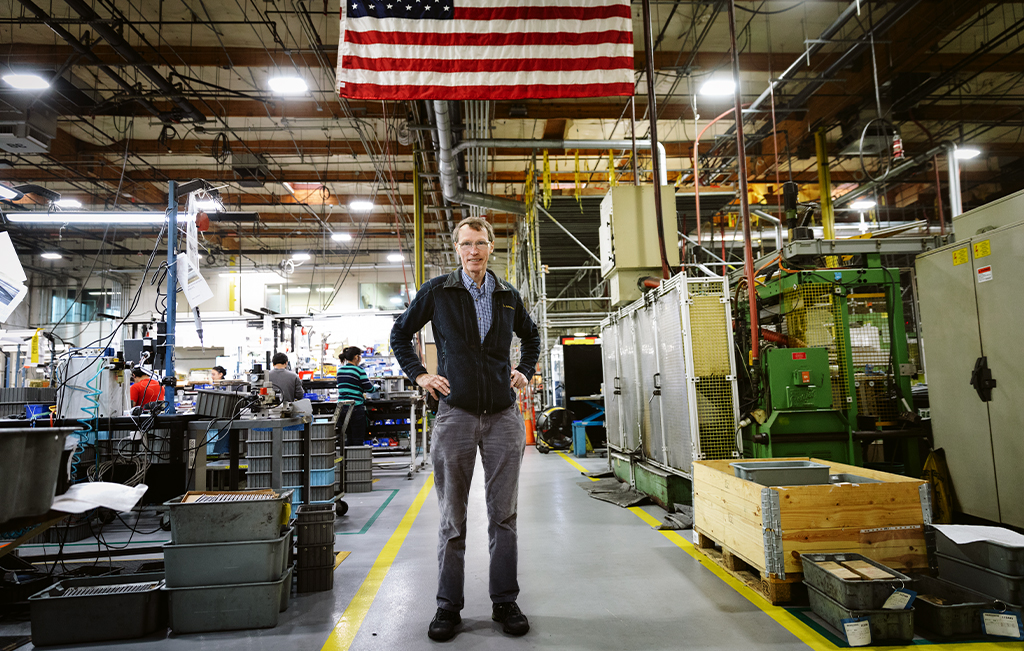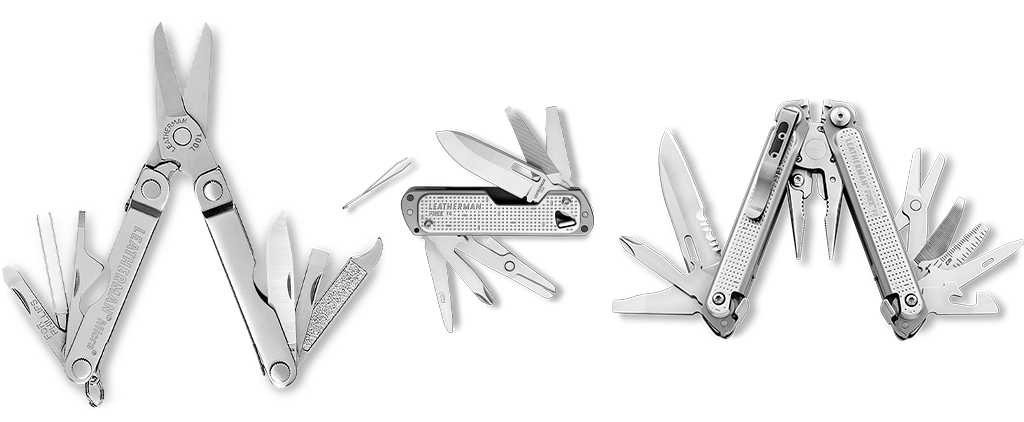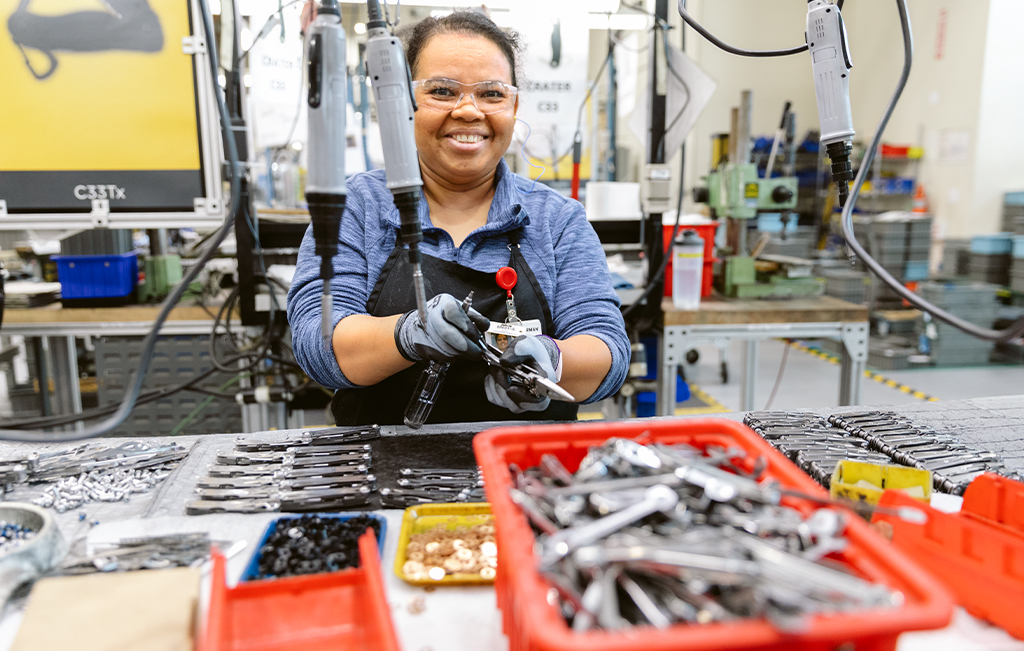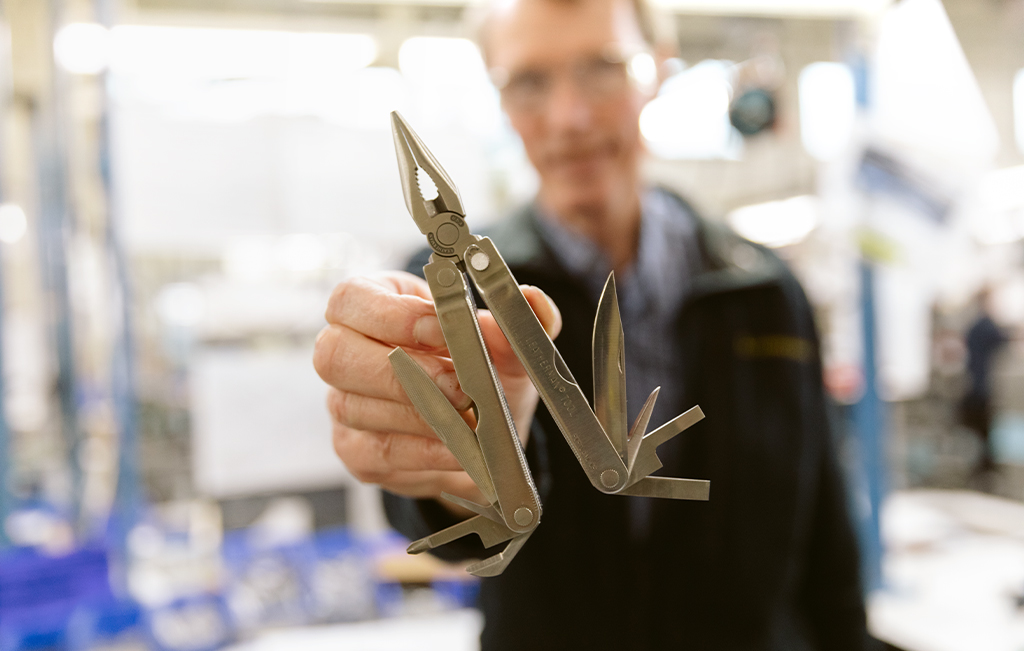A version of this story appeared in the summer 2020 issue of Uncommon Path.
Like microbreweries and chocolate shops, the Leatherman factory in Portland, Oregon, offers public tours (suspended during COVID-19). Visitors come to watch silver ribbons of steel cut into intricate shapes by a massive press that booms like a giant’s footsteps, applying 300 tons of pressure with each stomp. They peer into tumblers filled with synthetic stones that smooth and buff the tools like shells in the surf. But even among these tool fanatics, many are surprised to discover there’s a Mr. Leatherman, and that, like an exceptionally handy Willy Wonka, he’s leading their tour.
Now 72, Tim Leatherman loves to spend some of his semiretired days taking the curious around the company that bears his name. It’s a change of pace for a man who invented the company’s first multi-tool. In 1975, he was on a shoestring trip across Europe and Asia with his wife. The couple had been driving a temperamental used Fiat between cheap hotels with balky plumbing, and the then-26-year-old Tim kept wishing for a multi-tool with a pair of full-strength pliers—something that no Swiss Army knife included. In Tehran, he sketched out a design that would eventually become his breakthrough product: the Pocket Survival Tool, or PST.

Tim Leatherman stands in his Portland, Oregon, factory in January 2020.
Back in the U.S., Tim scavenged metal from discarded appliances and crafted a prototype in his brother-in-law’s garage. Then he confronted a steady stream of rejection as knife and tool companies panned the idea for swerving too far beyond their existing categories. He even tried to manufacture the PST himself, but retailers turned it down too. Hundreds of them.
“Things have never come easy for me,” Tim says. “My friends at school just got A’s with little effort, but I had to work hard to do that. I’m pretty resilient and very goal-oriented.” Fortunately, Tim wasn’t too stubborn to accept help. Seven years into the project, his Oregon State University pal Steve Berliner offered to invest in the fledgling company. Tim agreed, and as Berliner’s fresh ideas hit the product that Tim had spent the better part of a decade perfecting, sparks flew—and in 1983 Leatherman accepted its first retailer order of 500 units. Soon, the public was gobbling up the very product that manufacturers wouldn’t gamble on, and as retailers placed more orders, in 1984 the Leatherman Tool Group scrambled to produce 30,000 units by the end of the year instead of its original plan of 4,000.

From left: Leatherman Micra Multi-Tool, 29.95; Leatherman FREE T4 Knife, $59.95; Leatherman FREE P2 Multi-Tool, $119.95
Leatherman’s story might have ended with the PST, a product so well designed, it’s still sold by the company today as a collector’s item. Instead, Tim fostered the talent he discovered on the company’s growing roster of employees. One shining star was Ben Rivera, a fresh-from-OSU grad who proposed replacing the PST’s folding pliers with scissors. “I thought it was a mistake to take our focus off the plier tools,” Tim admits. But Rivera’s brainchild, the Micra, sold so well that when it launched in 1996, it was back-ordered within weeks. When Rivera’s son was born in 2000, he used a Micra to cut the umbilical cord.
The innovation continued. Rivera (now the CEO at Leatherman) went on to develop such icons as the Wave (which replaced the PST as the ultimate multi-tool) and the Tread (a tool bracelet that wearers could take into high-security zones like stadiums that prohibit knives). And last year, the company launched the FREE series, which uses magnets to secure the tools so users can deploy them with one hand.

Loc Nguyen on the Leatherman factory floor in Portland, Oregon, in January 2020
A few products tanked. The Flair, for example, was developed for the European market and included an olive fork and pâté knife. “Its downfall was that Euros didn’t want to eat food off the same tool they used to change their car’s oil,” Tim says wryly.
Like almost all Leatherman tools and parts, such ideas were built from scratch in Portland. “Knockoffs may be one-tenth our cost, but they’re one-twentieth our quality,” Tim says.

Tim Leatherman shows off the original Leatherman tool, The PST “Pocket Survival Tool,” which launched in 1983.
These days, Tim packs a portable engraver when he travels, so he can personalize the tools that fans bring to company events around the world. He also makes more time for his other interest: racket sports. Before making tools, Tim aspired to become a table-tennis pro, and though that dream never materialized, his passion hasn’t abated. He plays tennis most Saturday mornings and even won a silver medal at the pickleball national championships last November. (There’s a pickleball court in Leatherman’s warehouse.)
Only on the court does Tim leave his tools behind because, he says, Leatherman multi-tools are most useful when you least expect to need them—like at the wedding he attended in Hawaii, where he used his pocket tool to shut down a sprinkler that started soaking guests as the couple said their vows. “That was very gratifying,” he says. “It just feels great to fix something with your own hands.”
